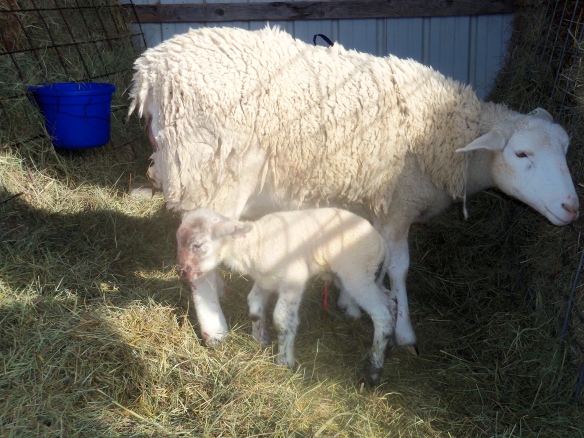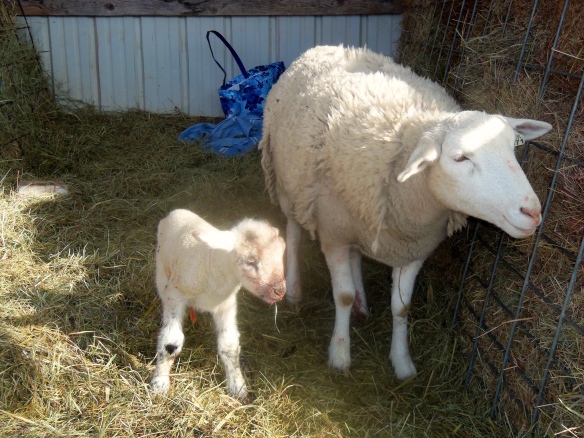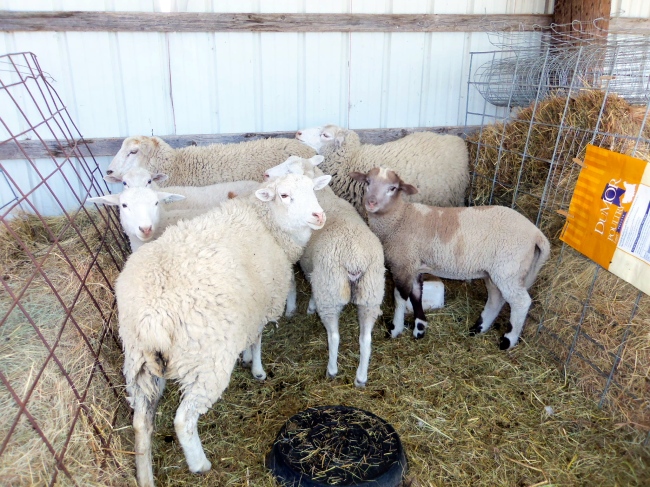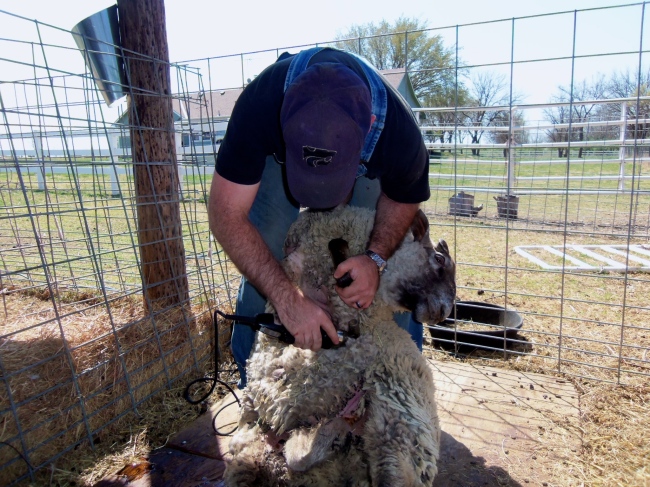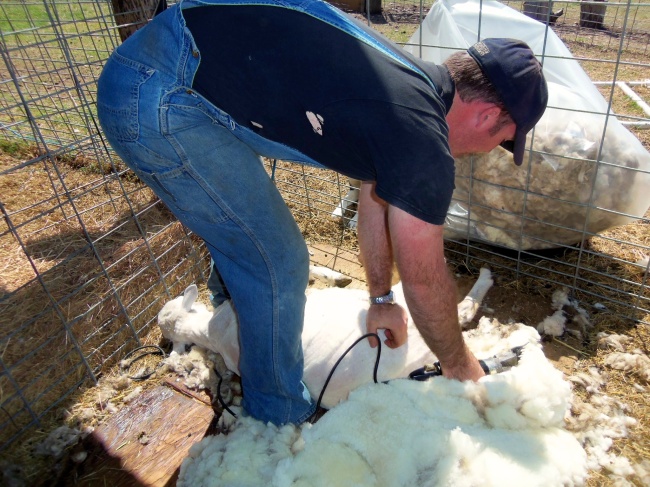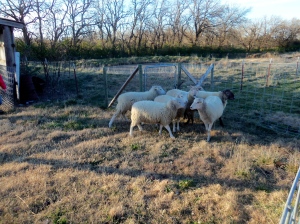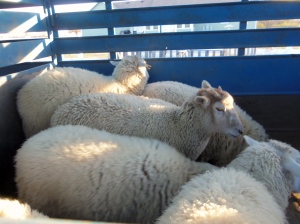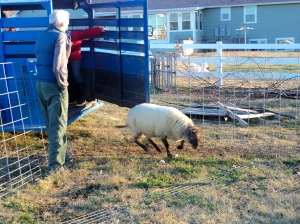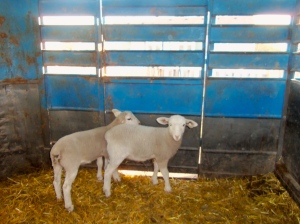This year Chinese New Year fell on Feb 19th and marked the beginning of the Year of the Ram. Without any planning on our part we happened to have a ewe due to lamb on the 19th so when the alarm went off, I went out to check on her. Sticking precisely to her due date, she had just delivered her lamb – he was still soaking wet and had not yet been cleaned. Unfortunately this represented a hazard as it was 17F (-8C) at the time and I was concerned about hypothermia. I didn’t want to deprive the ewe and her lamb of bonding time by taking over the cleaning but nor did I want him to freeze to death so I grabbed a towel and rubbed him vigorously to dry him as quickly as possible. I then turned him back over to her so that he could nurse.
Lambs are born instinctively knowing to search for the teat but they don’t always know exactly where to find it. He started nuzzling around her but every time he got close to the udder, she moved away. This was this ewes “first freshening” and she was alarmed by the little mouth seeking her teats; she wanted nothing to do with that. She hadn’t rejected the lamb himself – she was murmuring to him in that special voice ewes use only for their lambs, and she was interested in sniffing him – but she clearly did not understand that nursing is part of the job description.
I let them try to figure it out for an hour or so. I prefer that animals work things out for themselves and believe that in the long run they do better with less human intervention. But, after an hour she still wouldn’t allow him to nurse. He was shivering and I worried about him weakening. So, I cornered the ewe, holding her still with arms, legs and body, to give the lamb a chance. Within a short time he had found it and I was happy to hear him slurping as he drank, his little tail wiggling his joy.
I hoped that, having experienced nursing once, the ewe would assume all of her motherly duties but it was not to be. Over the course of the day I checked on them frequently but had to hold her down each time he needed to nurse. The only progress we made was that instead of having to pin her in a corner with my whole body, she had relaxed enough to stand still with just one arm holding her in a headlock. By late afternoon I was concerned that she would never “get it” and that I would wind up having to bottle feed him. I was not enthused by the prospect, as I trudged down to hold the ewe for another feeding. So it was with both relief and joy that I got there to find him nursing, his little tail waggling, the ewe nuzzling and talking to him.
This is the first time I’ve had a ewe not instinctively know how to care for her lamb – but now that she has fully accepted her role, she is taking good care of him. And, after a preponderance of ewe lambs this year, we are thrilled to welcome our own little Chinese New Year Ram.

